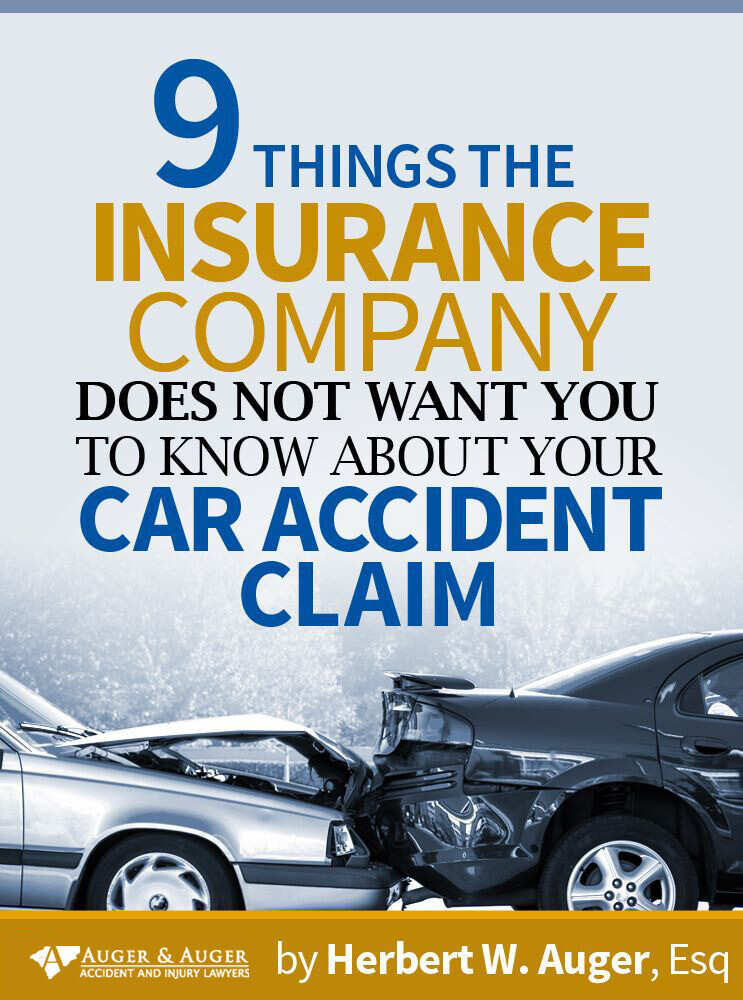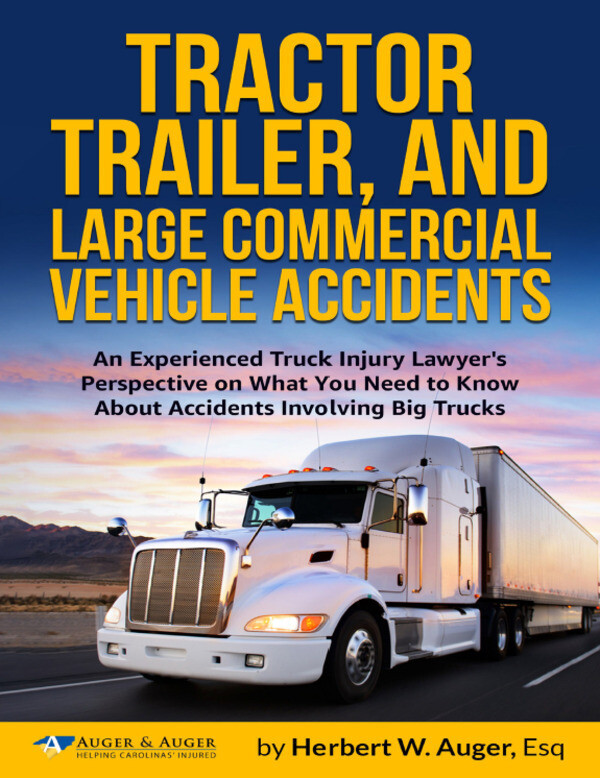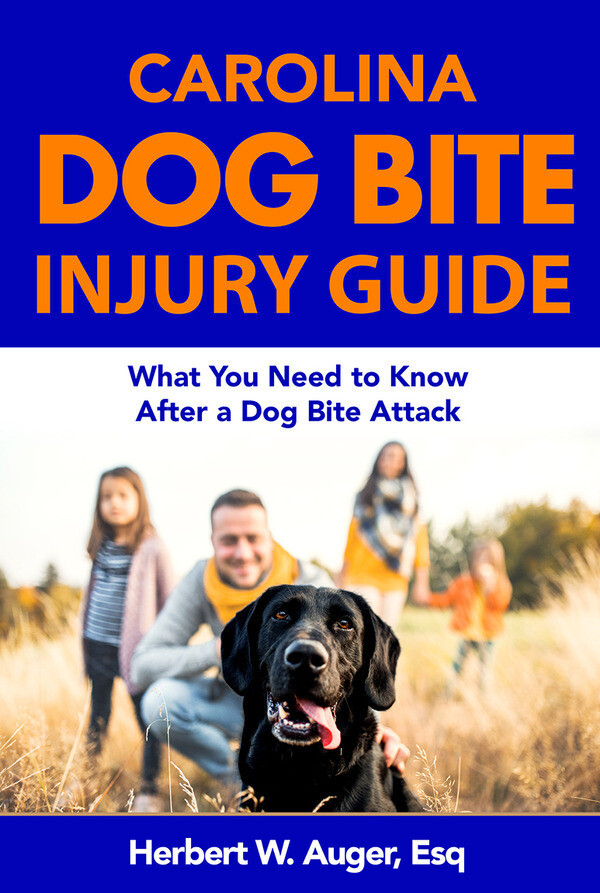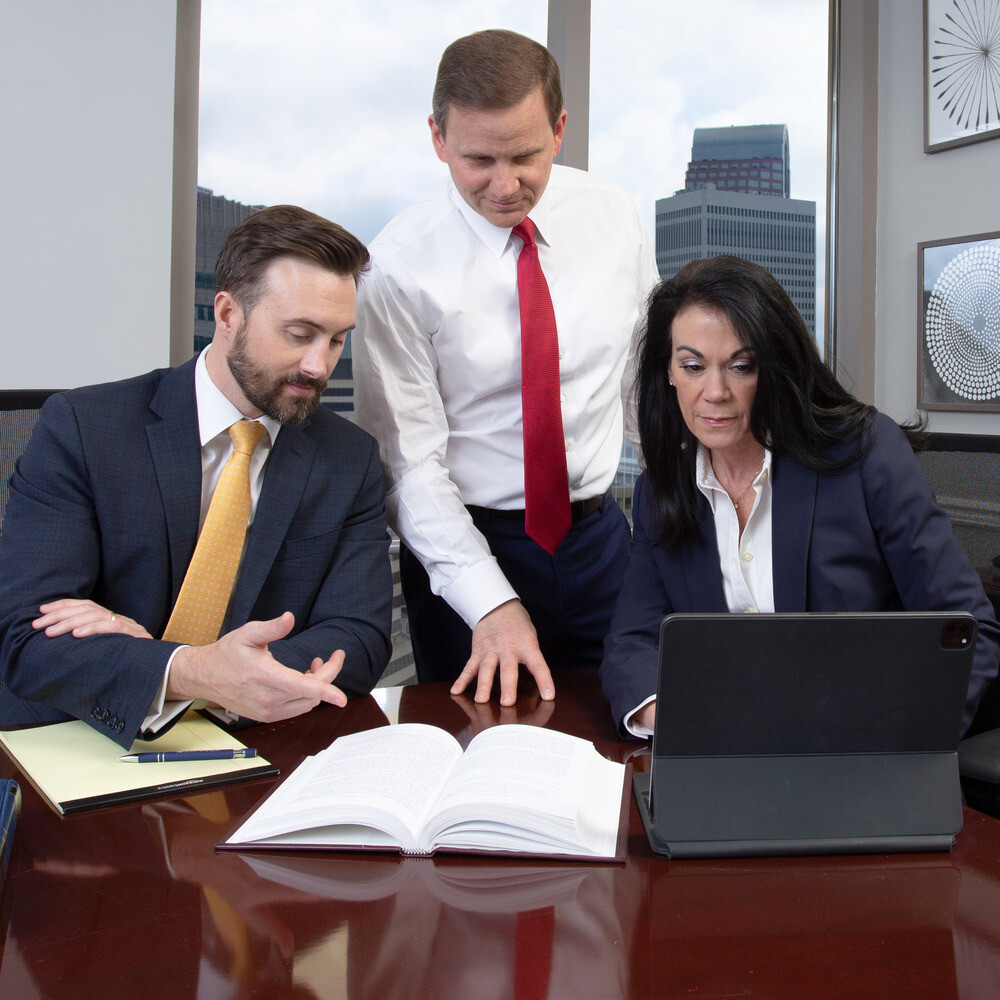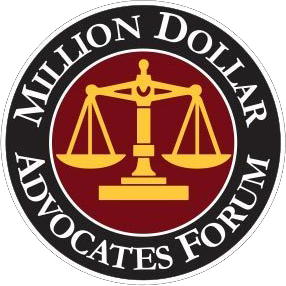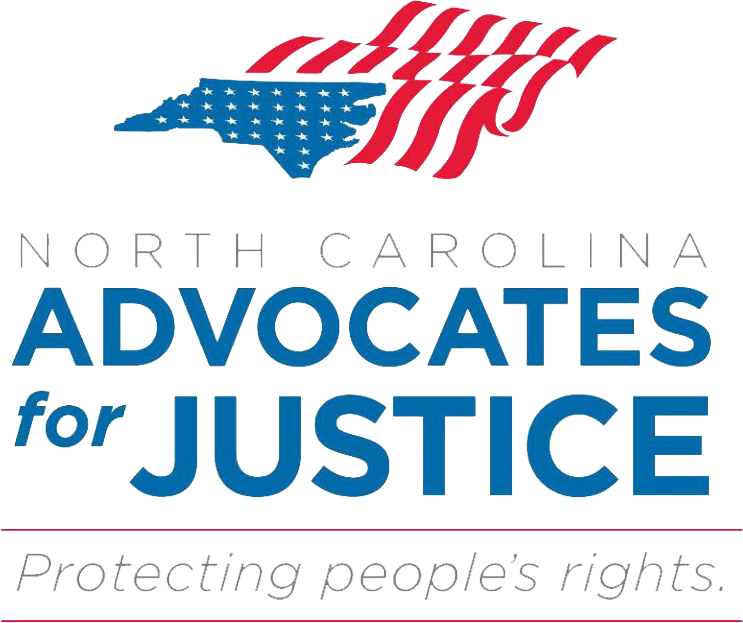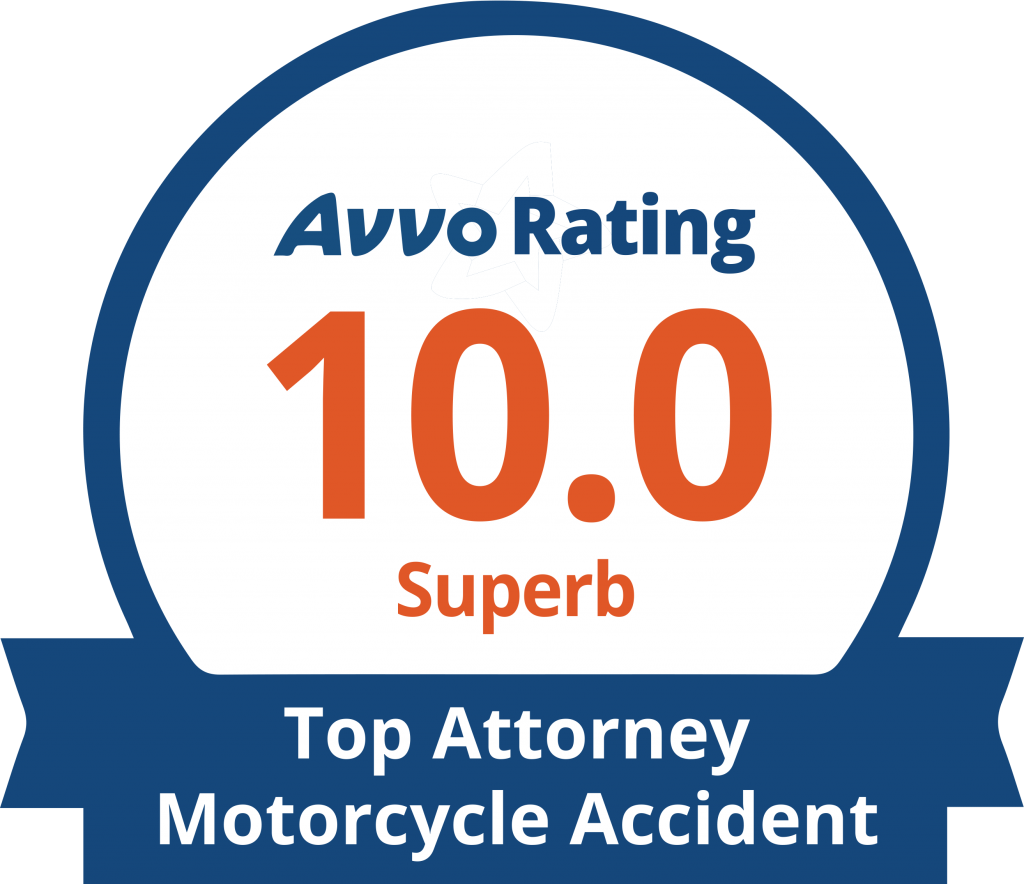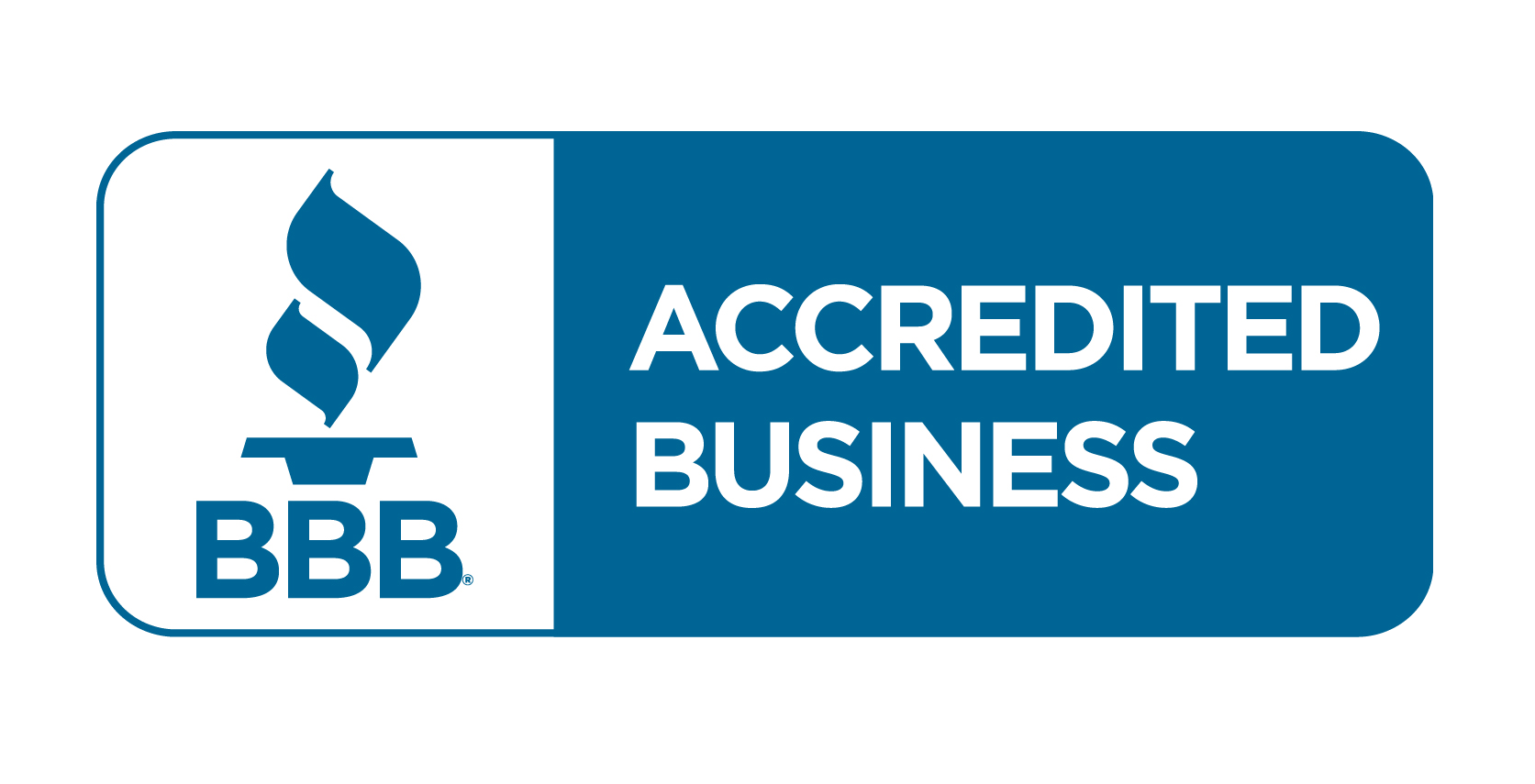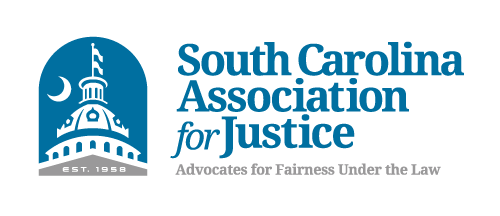As residents of Charlotte, we are spoiled with weather that is suitable for cycling most days of the year. Rain or shine, bicyclists can ride the infamous “booty loop” in Myers Park. With such a temperate climate, riders are at constant risk of injury due to negligent motor vehicle drivers. North Carolina exceeds the national average, with bicycle accidents representing 2.2% of traffic fatalities (2%).
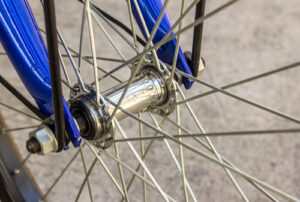
Charlotte bicycle accident lawyer Herb Auger is well aware that bicyclists stand only a small chance when it comes to traffic accidents with another vehicle. He can often be found riding the trails at the U.S. National Whitewater Center, Colonel Francis Beatty Park, and other local roadways. “With no protection against motor vehicles, we see a lot of cycling accident victims with serious or sometimes fatal injuries. My experience in this area of law and reputation in the cycling community has given me the edge in bike accident cases, whether in understanding my client, dealing with the insurance carrier, or presenting the case to a jury,” says attorney and founding partner Herb Auger.
Experienced Charlotte Bicycle Accident Lawyers Work for You
The Charlotte bike accident attorneys at Auger & Auger have been helping people injured in bicycle accidents for over 20 years. We recently settled a bicycle accident case for $1,400,000 for a young man who sustained fractures and head injuries when struck by a car that made a sudden left turn in front of his direction of travel. We can help you recover damages for medical treatment, property damage, medical bills, and lost wages. If you or a loved one was injured in a bike accident, call to speak to one of our experienced Charlotte bike accident attorneys. The consultation is free as well as confidential. We will go over the injuries related to your case and discuss your rights and options.
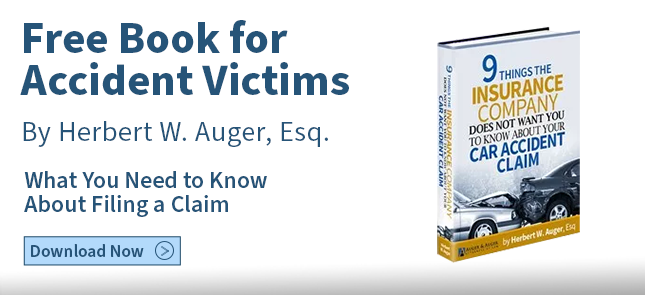
Life-Saving Tips for Charlotte Bike Riders
The City of Charlotte is scrambling to make the community safer for cyclists; however, lawmakers always have funding problems. Until the city adds more bike lanes, bicyclist safety awareness is essential to preventing a serious bike accident. The following lists a few ways to stay safe on your bicycle:
- Always wear a helmet. One of the leading causes of bike accident-related injury or death is head trauma. Children are required to wear a helmet while bicycling. It is recommended that adults also wear helmets.
- The Consumer Product Safety Commission found that more than half (54 percent) of people killed in bicycle accidents were not wearing helmets.
- A meta-analysis of bicycle accident injuries showed that wearing a helmet reduced the risk of head injury by 48 percent, severe head injury by 60 percent, traumatic brain injury (TBI) by 53 percent, and face injury by 23 percent.
- Although drivers need to look carefully for cyclists or pedestrians before turning or entering a roadway, most bicycle accidents happen when the driver looks but fails to see the cyclist. What can you do to combat this problem? Studies show that wearing fluorescent gear or clothing makes you more visible and less likely to be struck by a motor vehicle. Wear reflective gear when you ride at night or in the early morning and bright colors while you ride during the day. This will make you stand out to other motorists and decrease your risk of injury.
- Attach reflectors to your bicycle and ensure your bicycle is equipped with a headlight and multiple reflectors at night or early morning.
- Always be conscious of your surroundings. Motor vehicles will not always be on the lookout for cyclists, so make yourself aware of traffic patterns when riding your bike.
- Consider wearing a smartwatch or other device that allows you to call for help if you’re hurt and can’t reach your phone.
What Should You Do If You’ve Been Hit By A Car While On Your Bike?
This can be a terrifying experience and, if you’re hurt, a painful one. The first thing you should do is assess any injuries you have and try to get out of the roadway if you’re able to move. The last thing you need is to be hit by a second vehicle, and unfortunately, we’ve seen cases where that happened.
Once you’ve made it safely to the sidewalk, call 911 to report the accident and ask for an ambulance for your injuries. Even if they don’t seem serious at the time, it’s a good idea to get them checked out by a professional. In some accidents, injuries can be much more serious than they seem initially and may not show symptoms until a few hours or days later. If the paramedics recommend going to the hospital for further evaluation, take their advice.
Ideally, the driver who hit you should pull over safely, get out, and check on you. They should call for help if you’re unable to do so and stay with you until emergency services arrive. You can take this time to exchange contact and insurance info for later.
Fortunately, this is what happens in most cases, but sometimes we also see hit-and-run scenarios. In the event that the vehicle simply drives off, try to get the license plate number, or make a note of what the car looks like so you can tell the authorities later.
How Do Bicycle Accidents Happen?
Each accident is unique, but there are some situations that we see a lot with bicycle accidents. Here are some of the more common types of motor vehicle versus bicycle collisions:
- The bike crosses the vehicle’s path. Note that this is not necessarily the biker’s fault, although being aware of your surroundings and checking for cars is certainly advisable. However, there are many situations where the biker has the right of way, but the vehicle fails to yield. Accidents in crosswalks are almost always the vehicle driver’s fault. But in some cases, the driver may argue that the bicyclist contributed to the accident, even if the driver was still mostly at fault. Why is this important? Under North Carolina’s contributory negligence laws, a bicyclist found to be even one percent at fault cannot collect damages from the driver. For this reason, we recommend contacting a Charlotte bicycle lawyer right away after your accident. If the driver (or their insurance carrier) claims that you were at fault, we can help refute those claims and work to protect your legal rights.
- The vehicle hooks left in front of the biker. This is often one of those situations where the driver didn’t see the bicycle for various reasons. Reflective gear can help, but sometimes the issue is another vehicle or object blocking the driver’s view of the bike. Unfortunately, this is also a very dangerous type of crash. Sometimes the biker is unable to stop and T-bones the car. Or, they may swerve to avoid it and go off the road or hit something else. In many cases, the car may be speeding. Again, in most instances, the bicyclist has the right of way, and the driver violates it.
- The vehicle hooks a right in front of the biker. In this kind of crash, the bike and vehicle are going in the same direction, and the vehicle tries to turn right, crossing the bike’s path. Again, it’s usually because the driver doesn’t notice the bike there. Sometimes the bike may be in the driver’s blind spot, especially if they are in a large, boxy vehicle like a delivery truck. In other cases, a driver may turn right into an intersection where the bicyclist is trying to use a crosswalk.
- A vehicle driver or passenger opens a door as a bicycle goes by. This sounds like a freak accident, but it happens more often than you might realize. Most people understand the importance of looking before they turn or pull out onto the street. But many motorists don’t think about looking before opening their car door. If a bicyclist happens to be riding by, this can lead to serious injuries.
Causes Of Bike Accidents
There are numerous reasons why cars collide with bicyclists. Many of these risks can be reduced with safe driving practices:
- Distracted driving. This remains a big problem for many reasons and is a major threat to cyclists. It’s hard to spot a bicycle if you’re using your phone while driving, so always concentrate on driving when you’re behind the wheel.
- Drivers getting too close to a bicyclist. It’s important for motorists to allow bikers as much space as possible to reduce the risk of crashes. Bikers can also make an effort to keep a distance from cars. Where possible, riding on the sidewalks instead of the street may help reduce risk.
- This is never a good idea, but it’s even worse when bicyclists or pedestrians are around. Always slow down when you see a bike – this will give you more time to react if they do something unexpected or if they get in a collision with another vehicle.
- Failure to yield. Drivers should be familiar with the rules of the road, which include instructions for sharing the road with bikers and knowing when to yield the right of way. If you’re not sure who has the right of way, slow down and allow the biker to go ahead anyway.
- Changing lanes without being certain the lane is clear. Using your mirrors is good, but it’s best to turn your head very briefly and check the lane before finally getting over, just in case you’ve missed a bicyclist.
- Running red lights or stop signs. Again, you shouldn’t do this in general, but it can be especially dangerous for bikers because they’re harder to see. It’s very easy to look both ways and think that no one is coming, so it’s okay to go ahead and run that stop sign or light. But if you miss the bicycle heading for the intersection, it can lead to a collision.
- Drunk or impaired driving. Today there are many rideshare companies operating in Charlotte for occasions when you’ve been drinking. You can also call a cab, take a bus, enlist a friend to be a designated driver when you’re planning to go out or spend the night at a friend’s home if you’ve had too much to drink.
- Tired or drowsy driving. Most people know the dangers of drunk driving, but did you know that driving while fatigued can be just as dangerous? If you’ve been up for 24 hours, the effect is similar to having a blood alcohol level (BAC) of .10, higher than the legal limit of .08. Worse, being tired can increase the effects of drinking alcohol, even in minimal amounts. If you haven’t had enough sleep or feel tired or drowsy, use one of the options listed above to find an alternative way to get home.
Common Injuries In Bicycle Accidents
Unfortunately, there are many ways to get hurt in a bike accident. Bicycles simply don’t offer protection if you’re struck by a fast-moving vehicle or thrown off your bike, or both. Here are some of the more common injuries we see in bicycle accidents:
- Broken bones – arms and legs are frequently fractured, but collarbone breaks, jaw fractures, and skull fractures also happen
- Head injuries, including concussions and traumatic brain injury (TBI)
- Face lacerations or road rash from connecting with the concrete
- Lost or broken teeth
- Internal injuries or bleeding
- Back or spinal cord injuries, which can result in chronic pain or even paralysis
- Soft tissue injuries like whiplash, especially if the bike was hit from behind
Dealing with these or other kinds of injuries can be costly and time-consuming, and in many cases, the victim may miss time at work after the accident. A single bicycle accident may be financially devastating for many people for all these reasons. Even those with good health insurance could find the deductibles or co-pays for their medical treatment are not affordable. If you had an accident and are trying to determine how to deal with a pile of medical bills, we recommend speaking with a Charlotte bicycle lawyer before you make any decisions. They can explain your choices, including options you may not have considered for seeking compensation.
Legal Assistance You Can Depend On
Mecklenburg County has the highest bicycle crash rate in North Carolina. Between 2006 and 2010, there were 605 bike accidents in Mecklenburg County.
At Auger & Auger Accident and Injury Lawyers, we have been fighting for victims’ rights for the past 20 years and have helped many Charlotte-area cyclists recover from their injuries. Contact Auger & Auger Accident and Injury Lawyers at (704) 364-3361 for your free consultation.


